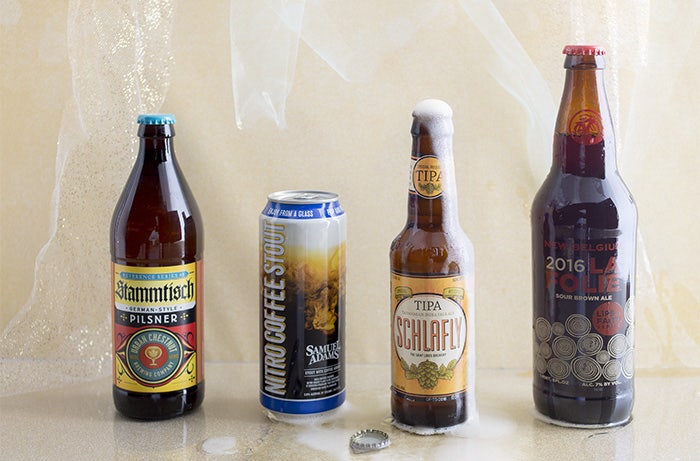Hit the gym. Move. Change jobs. Most New Year’s resolutions require serious commitment to change. This one’s easy: Drink a different beer. Resolve to follow these four paths to a better beer year. Once you feel like imbibing again, that is.

Situation
You dig only domestic lagers.
Solution: Try a new-school pilsner.
Don’t believe the double-IPA headlines: America remains a lager-loving nation, thanks to the style’s refreshing signature crispness. The missing elements—aroma and flavor—are found in the latest lavishly hopped pilsners. They merge low alcohol levels and drinkability with floral, herbal aromas and palate-perking bitterness.
Try: Urban Chestnut Stammtisch
Named after drinking clubs in German beer halls, St. Louis-made Stammtisch is as crisp as a Saltine, with a pleasing peppery bitterness.

Situation
You drink only Guinness.
Solution: Try nitro stouts and porters.
The magic trick of Guinness, those tiny bubbles of nitrogen that create its creamy mouthfeel and fluffy crown, has been appropriated by craft brewers. They’ve created stouts and porters that are smoother than R&B and as luscious as chocolate mousse. Enjoy it on draft (Firestone Walker Nitro Merlin Milk Stout, Founders Nitro Oatmeal Stout) and in cans (Breckenridge Nitro Vanilla Porter).
Try: Sam Adams Nitro Coffee Stout
Cold-steeped coffee beans add roasty, eye-opening notes to the canned stout, which evokes strong java cut with half-and-half.

Situation
You don’t like IPAs.
Solution: Try tropical IPAs that are low in bitterness.
IPAs once embraced aggressive bitterness, a tactic that turned off as many drinkers as it turned on. However, the style has taken a soft, tropical turn, thanks to recently developed hop varieties like Mandarina Bavaria (citrus), Mosaic (berries, peaches) and Nelson Sauvin (white wine), as well as different brewing techniques. Bitterness? All but banished.
Australia’s Topaz and Galaxy hops supply this lightly hazy IPA with a fruit salad of apricots, melons and citrus wedges.

Situation
You prefer wine.
Solution: Try a barrel-aged sour.
Your vinous leanings will align with enlivening sours, a product of patience and purposeful infection. Long a Belgian tradition, domestic producers like Jolly Pumpkin and Rare Barrel have embraced souring bacteria like Lactobacillus (which converts milk into yogurt), and Brettanomyces (note the earthy, farmyard funk). They help create acidic gems that are aged for months or years in oak barrels or foudres, which are all the tastier if they once held wine.
Try: New Belgium La Folie
This mahogany blend of foudre-seasoned beers, aged one to three years, is a tart cruise across a landscape of green apples and cherries.
Last Updated: May 4, 2023















